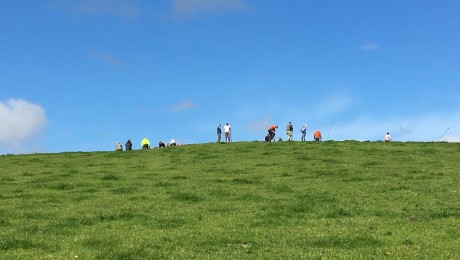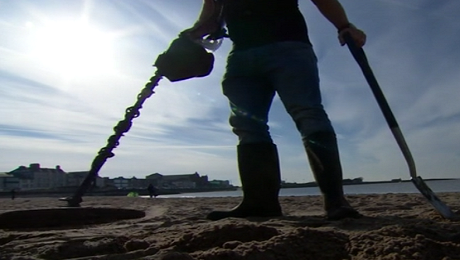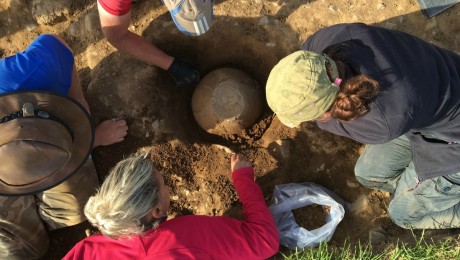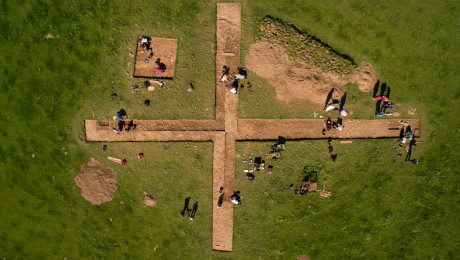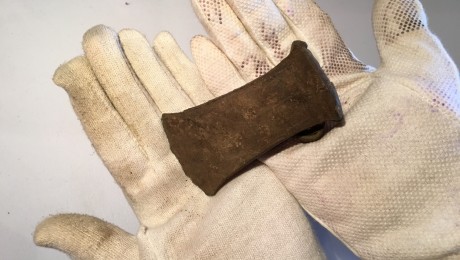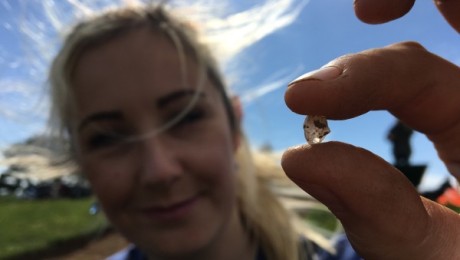We’ve got a unique opportunity to scientifically investigate not one, but TWO Bronze Age burial mounds, and there’s still an awful lot left to find out.
Our investigation has the potential to fill significant gaps in knowledge about Bronze Age funerary monuments and the people who built them. There is a real need for more scientific information about barrows, particularly in North West England, making this year’s dig all the more important.
During our excavation we’ll be looking to get a better idea of the shape and size of the barrow to see how it compares with other barrows in Britain, and to establish how it changed and evolved over time. This will help us to better understand how the Bronze Age community interacted with it, and perhaps reveal more about its primary function.
We’re also interested to learn how the barrow related to the wider prehistoric landscape, and whether the topographical setting helped to shape the barrow and influence the activities that took place there.
Bones, Burials and Bronze Age Life
Barrows are first and foremost funerary monuments, but they can also tell us a great deal about Bronze Age daily life. By collecting environmental samples from the barrow, we’ll be able to learn more about agricultural and industrial activities that took place on and near the site, and how the community that lived there utilised the natural resources they had to hand.
Objects that we recover, such as the chisel and dagger found previously, will also provide clues about the types of activity that occurred and reveal how advanced their technology and tools were compared to other Bronze Age communities in Britain.
The Morecambe Barrow
Where there is one burial, there are often others. With continued and careful analysis, we can find out if this mound was dedicated to a single individual, or whether the urn was surrounded by many more. If that’s the case, we’ll be able to learn huge amounts about who these people were, and even use the latest scientific techniques to find out where they were born and where they grew up.
Previous small-scale investigations into the barrow carried out by the Portable Antiquities Scheme and University of Central Lancashire have identified cremated bone (as yet unidentified as human or animal) deposited within a stone cairn inside the mound, and there’s a strong possibility that the barrow may contain at least one more undisturbed burial.
Who was buried here? What role did they play in Bronze Age society? And why were they buried in this way? We’ll be searching for answers to these questions and looking to learn more about Bronze Age funerary customs and the significance behind these barrow burials.
The Lancaster Barrow
Apart from the very small excavation in 2016, the site of the Lancaster Hoard has never been archaeologically investigated. From the little that we did do, it looks like the site is another burial mound.
But what kind of burial mound is it? When was it built? Who by? How big is it? And how long did it stay in use for? That’s the basic information we’re hoping to find out in 2017.
Looking forward to September 2017
We’re confident that together, this joint venture between DigVentures, Durham University and the Portable Antiquities Scheme, we can gather enough evidence to bring the long overlooked Bronze Age of North West England back to life, and begin to tell a story that spans dozens of generations.
With all these questions to answer and possibilities to explore, July just can’t come soon enough! DigVentures has assembled an expert team of Bronze Age specialists to provide the investigation with the best possible support and expertise. Our HLF-funded project provides a rare chance to glimpse through a window into Bronze Age life (and death) in North West England, and uncover this barrow’s untold story.
